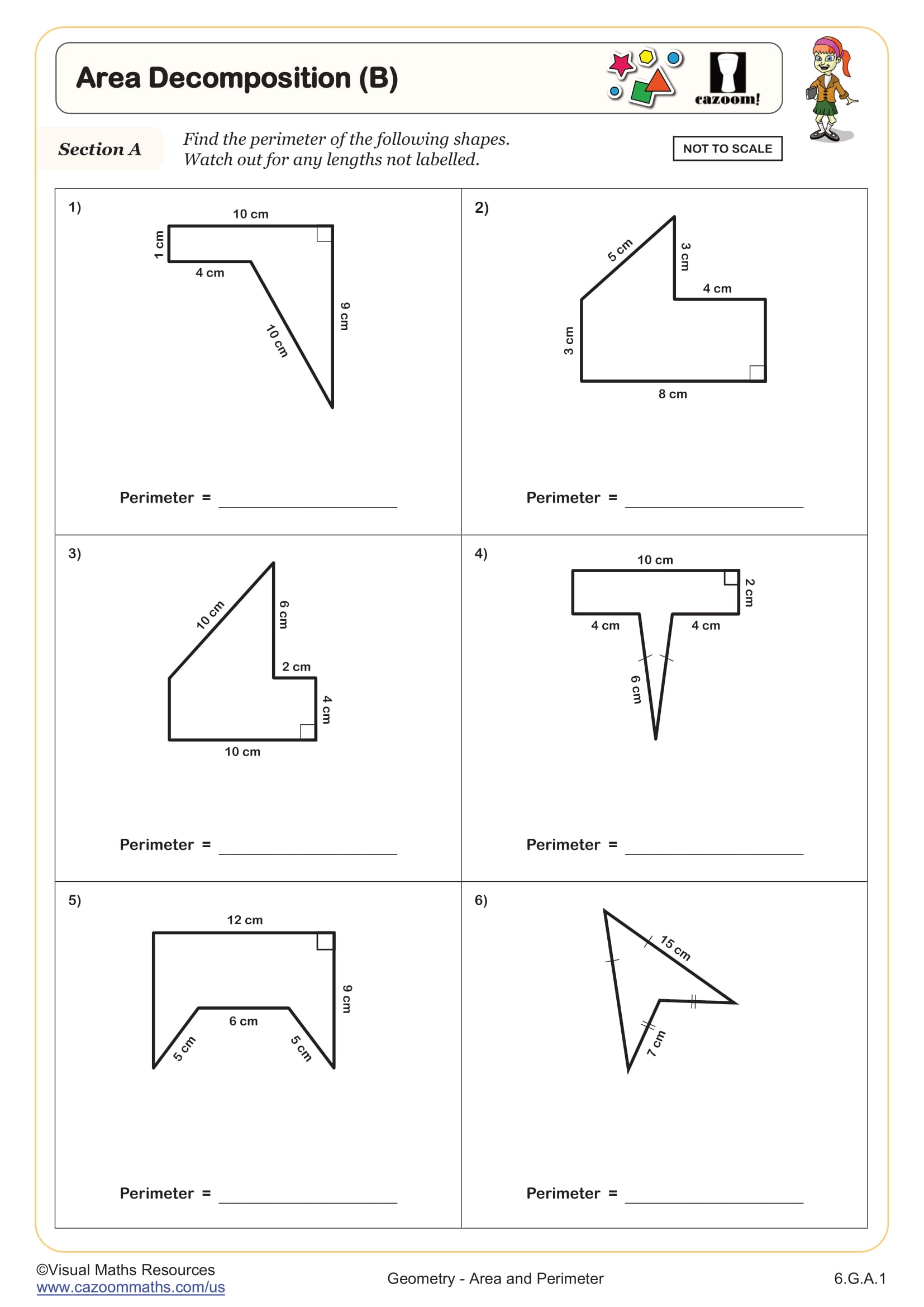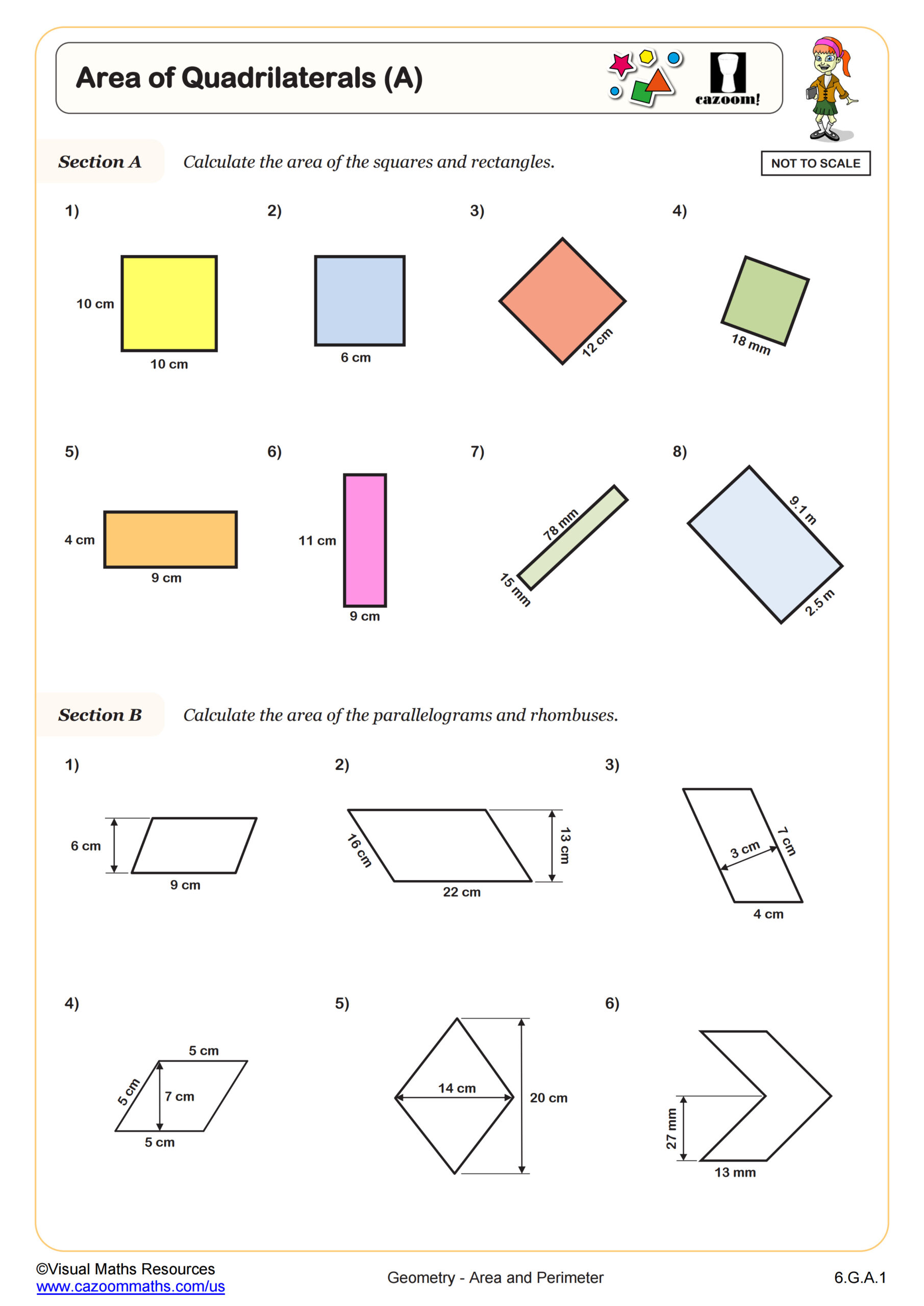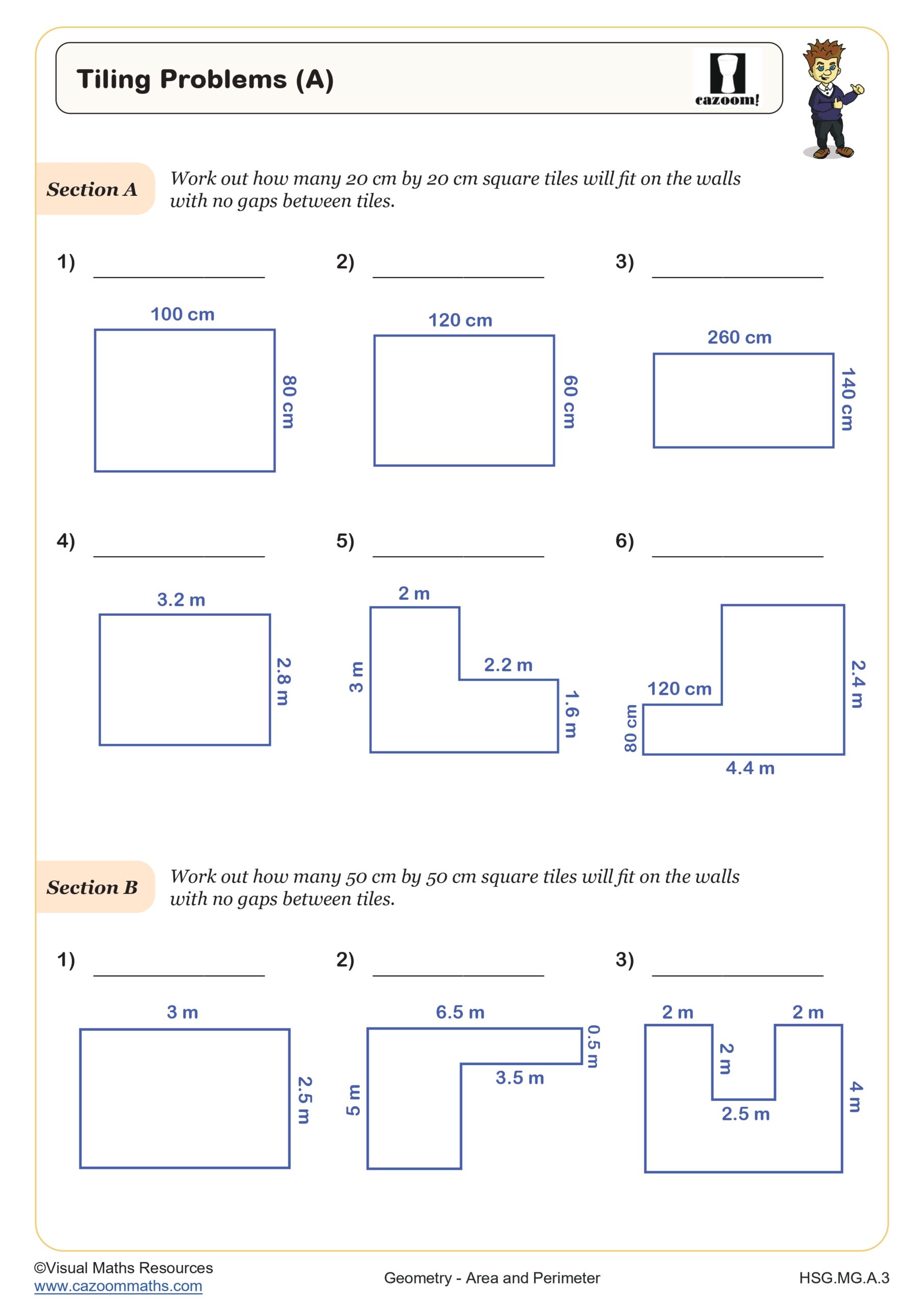Loading...
Back to:
Area of Irregular Hexagons (L - Shapes) WORKSHEET
Suitable for Grades: 3rd Grade, 4th Grade
CCSS: 3.MD.C.7, 4.MD.A.3
CCSS Description: Relate area to the operations of multiplication and addition. a. Find the area of a rectangle with whole-number side lengths by tiling it, and show that the area is the same as would be found by multiplying the side lengths. b. Multiply side lengths to find areas of rectangles with whole-number side lengths in the context of solving real world and mathematical problems, and represent whole-number products as rectangular areas in mathematical reasoning. c. Use tiling to show in a concrete case that the area of a rectangle with wholenumber side lengths a and b + c is the sum of a × b and a × c. Use area models to represent the distributive property in mathematical reasoning. d. Recognize area as additive. Find areas of rectilinear figures by decomposing them into non-overlapping rectangles and adding the areas of the nonoverlapping parts, applying this technique to solve real world problems.
Apply the area and perimeter formulas for rectangles in real world and mathematical problems. For example, find the width of a rectangular room given the area of the flooring and the length, by viewing the area formula as a multiplication equation with an unknown factor.
Apply the area and perimeter formulas for rectangles in real world and mathematical problems. For example, find the width of a rectangular room given the area of the flooring and the length, by viewing the area formula as a multiplication equation with an unknown factor.
Area of Irregular Hexagons (L - Shapes) WORKSHEET DESCRIPTION
Learners will compare two methods that can be used to calculate the area of L shaped irregular hexagons throughout this worksheet. They are shown the methods of splitting the hexagon into 2 rectangles and subtracting a ‘missing’ piece in Section A and are asked to use each method to find the area of 9 compound shapes.
The lengths that students are provided with differ, and they will have to add and subtract to find missing lengths throughout.
Section B consists of some problem solving questions. Here students will use given areas to calculate missing lengths in composite shapes and apply their knowledge to decide whether there is enough money to carpet a floor.




